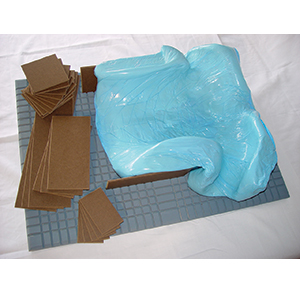STEP-BY-STEP INSTRUCTIONS
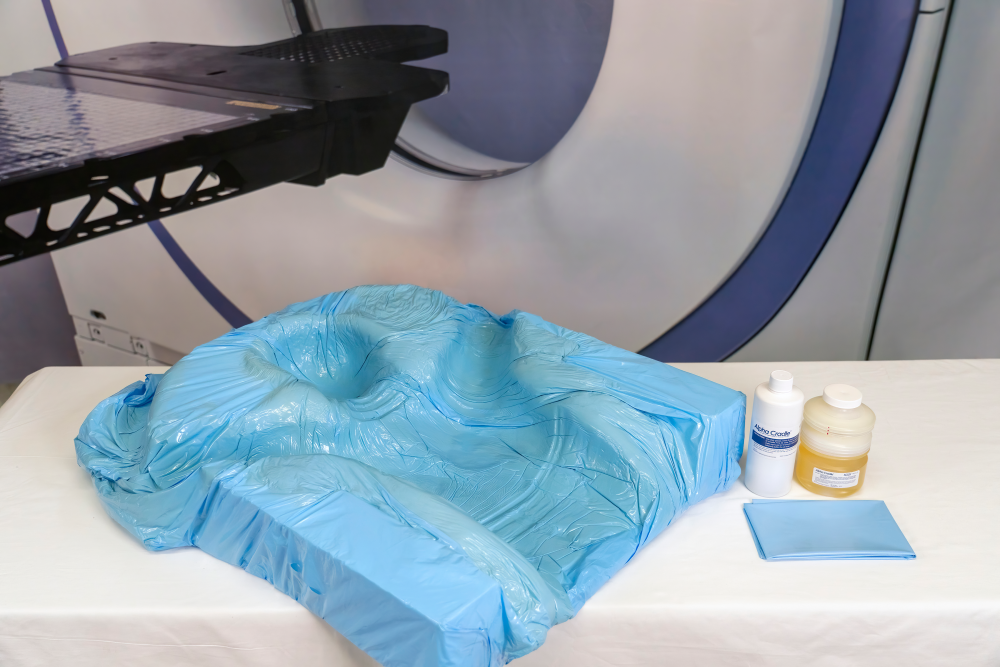
Safety First!
Always practice safety for your patients and staff. Wear protective gloves, smock and eye protection. Have patient remove jewelry before making forms. Always follow directions!
Comfort Your Patient!
Tell your patient they must lay still for 15 minutes while the foam rises around them. It will feel comfortably warm as it rises and hardens in the position they will need to hold for treatment.
Each kit includes a set of foaming agents, and a special blue polyform bag.
The AC250 contains enough foam to immobilize the torsos of smaller children, or an adult head, head & neck, or upper extremity. The AC325 is our standard size foam. It has been developed to create most adult anatomical molds, including lower extremities, pelvic forms, breast forms, mantle forms, head & shoulder, etc.
The ACMMII (Alpha Cradle Mold Maker board) allows you the flexibility to have the patient lay flat, roll to one side, one or both arms up or down, or any other set-up position needed.
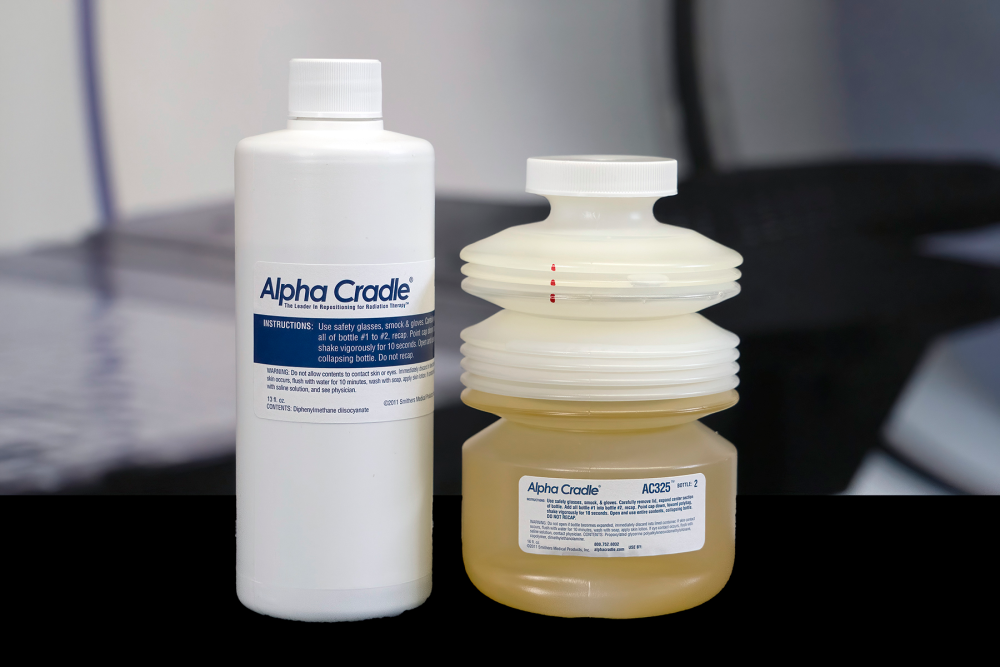
It’s Easy to Make the Perfect Form on Any Device You Use!
Using Your Treatment Device
Place the bag of foam on a base piece with a high (R) value (such as a piece of Styrofoam®, cardboard, or wood). By creating on this type of base, you will have a thick, creamy filled bag of foam to pick up and place on top of the treatment device.
Open the bag, shake the mixed foam with the cap pointed down, pour all of the foam into the bag, and collapse the bottle. ONLY Alpha CRADLE® brand bottles collapse, allowing you to use all of the hang-up in the bottle. Push the air out of the bag, and fold the open end underneath the bag. Smooth the foam evenly. Next, please your patient on the bag and push them deeply into the warm, rising foam for a truly safe and secure customized fit!
Our bottle of polyol expands, allowing you to add the papi and shake to mix the foam thoroughly. Then our bottles collapse, ensuring you can use every bit of hang up possible.
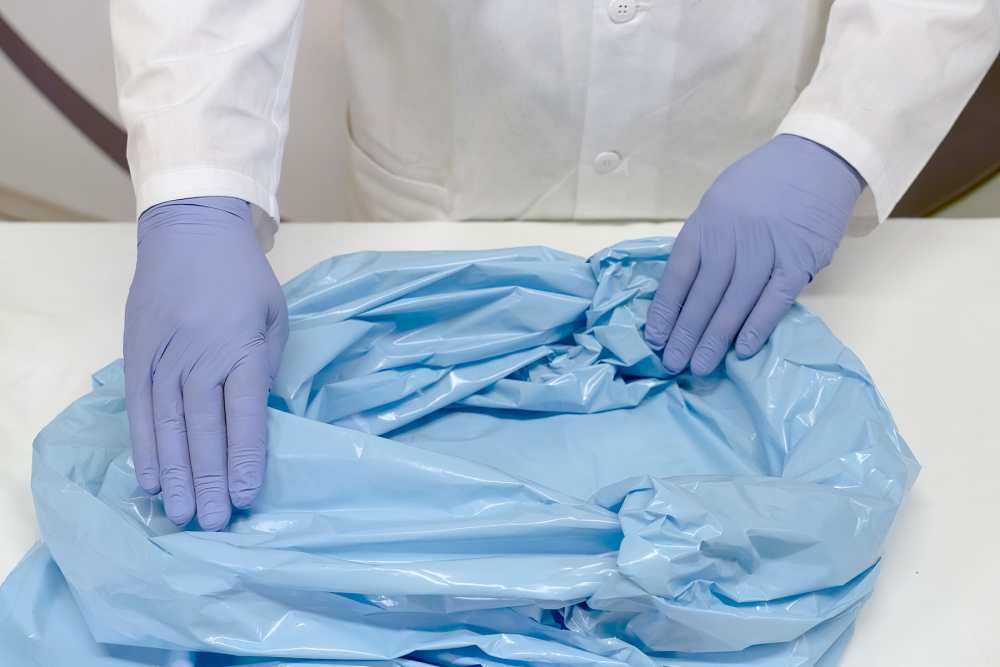 1. Open and spread out the blue polyform bag.
1. Open and spread out the blue polyform bag.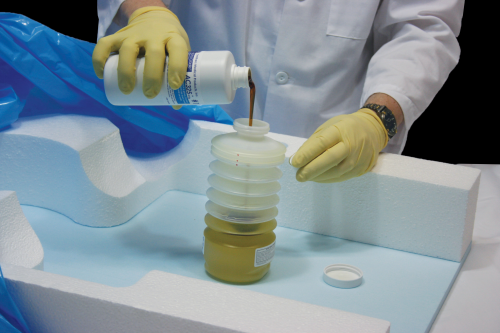 2. Carefully pour the entire contents of bottle #1 into bottle #2, discarding bottle #1 into a leakproof container.
2. Carefully pour the entire contents of bottle #1 into bottle #2, discarding bottle #1 into a leakproof container.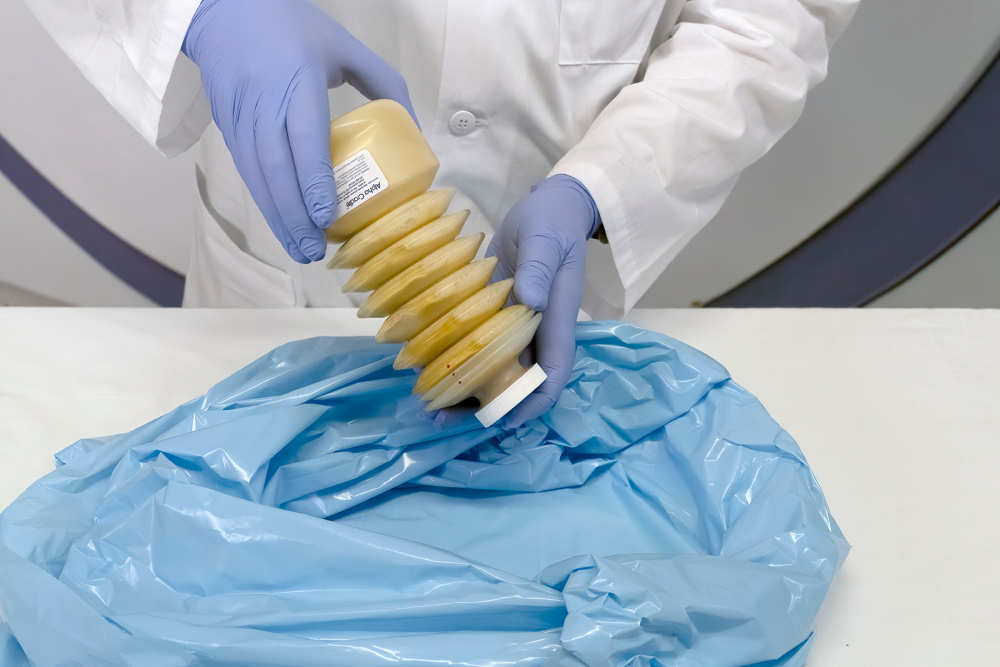 3. Recap the bottle and point it down inside the bag toward the base, away from everyone. The bottle must be shaken vigorously. Shake the bottle for only ten timed seconds and remove the cap immediately.
3. Recap the bottle and point it down inside the bag toward the base, away from everyone. The bottle must be shaken vigorously. Shake the bottle for only ten timed seconds and remove the cap immediately.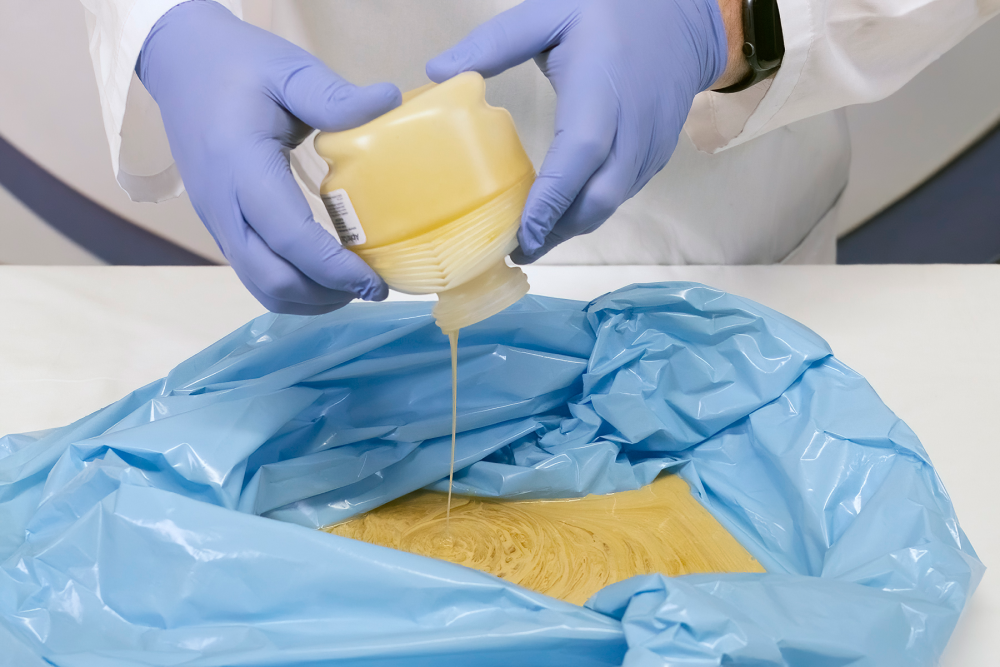 4. Carefully pour the entire contents into the bag, removing as much hang up as possible. Then fold bag down, remove air from bag and fold open end underneath.
4. Carefully pour the entire contents into the bag, removing as much hang up as possible. Then fold bag down, remove air from bag and fold open end underneath.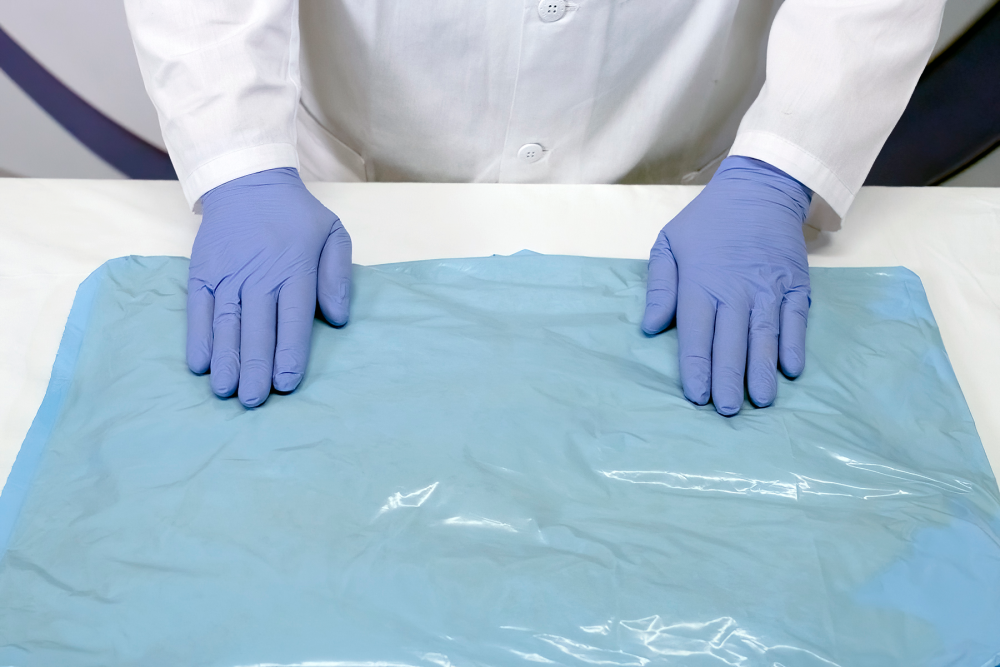 5. Spread the rising foam evenly throughout the bag.
5. Spread the rising foam evenly throughout the bag.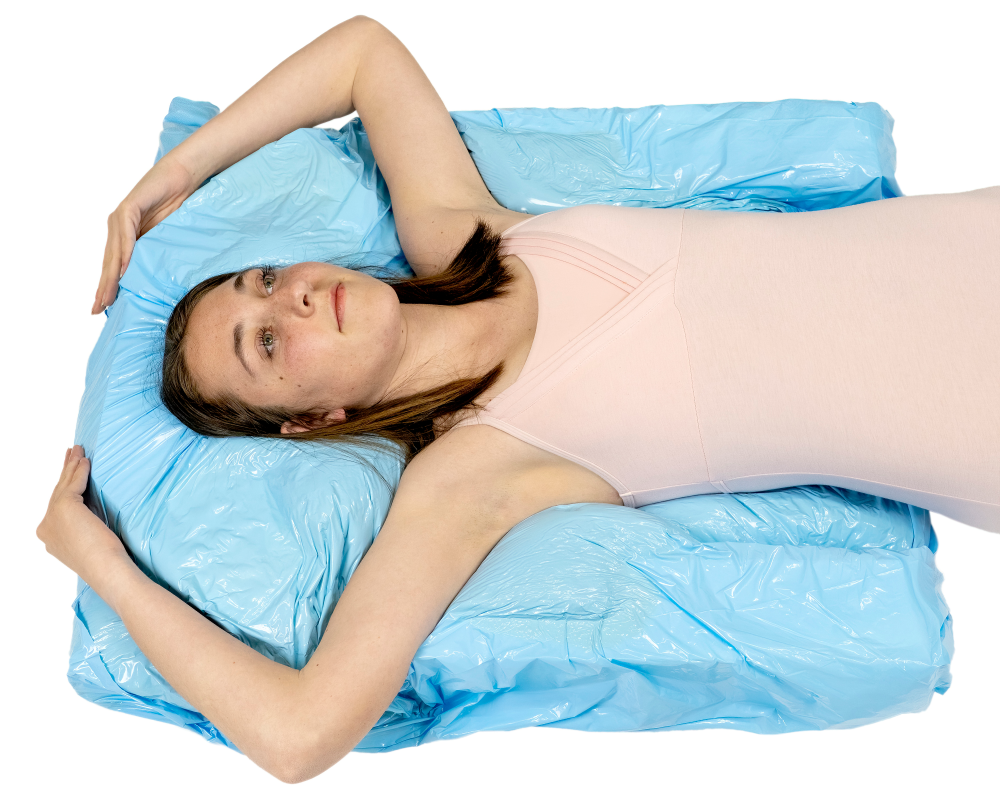 6. Place the bag of evenly spread foam onto your treatment device, then place patient onto bag of foam. Within 15 minutes, the foam will rise and cool. Remove patient from form.
6. Place the bag of evenly spread foam onto your treatment device, then place patient onto bag of foam. Within 15 minutes, the foam will rise and cool. Remove patient from form.Using the ACMII Board
The ACMMII is a 24”x 34” slotted board that comes with 23 assorted dividers to create customized body devices. Use it to make any type of anatomical device on any size patient, young or old, in the prone or supine position.
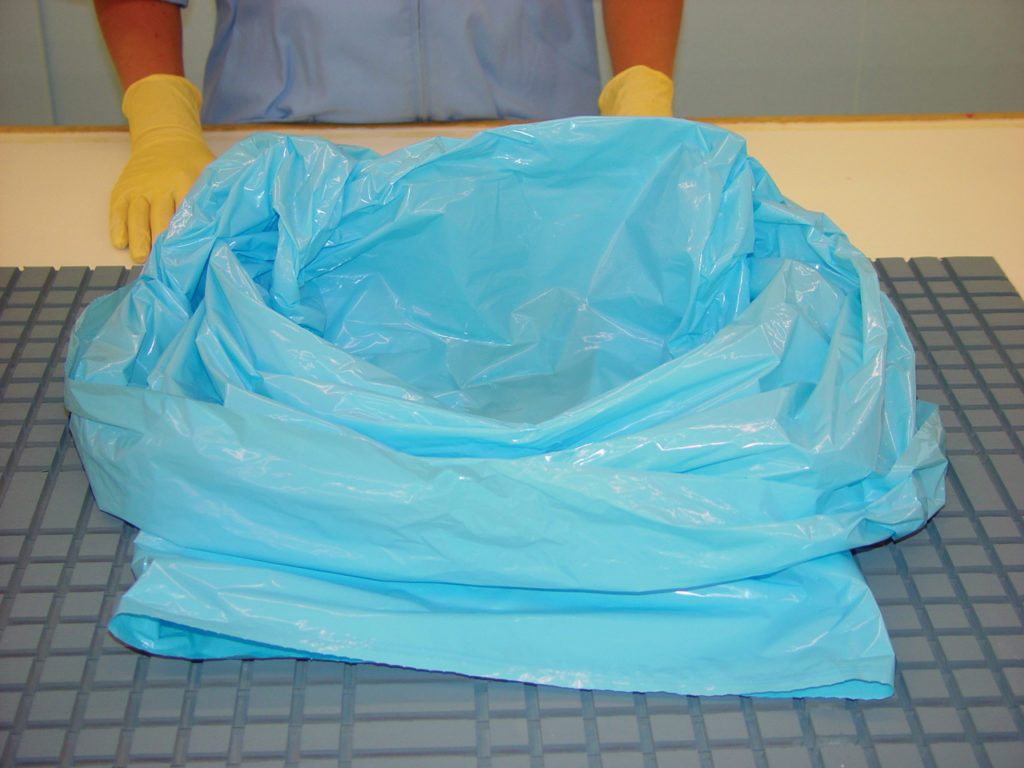 1. Open and spread out the blue polyform bag.
1. Open and spread out the blue polyform bag.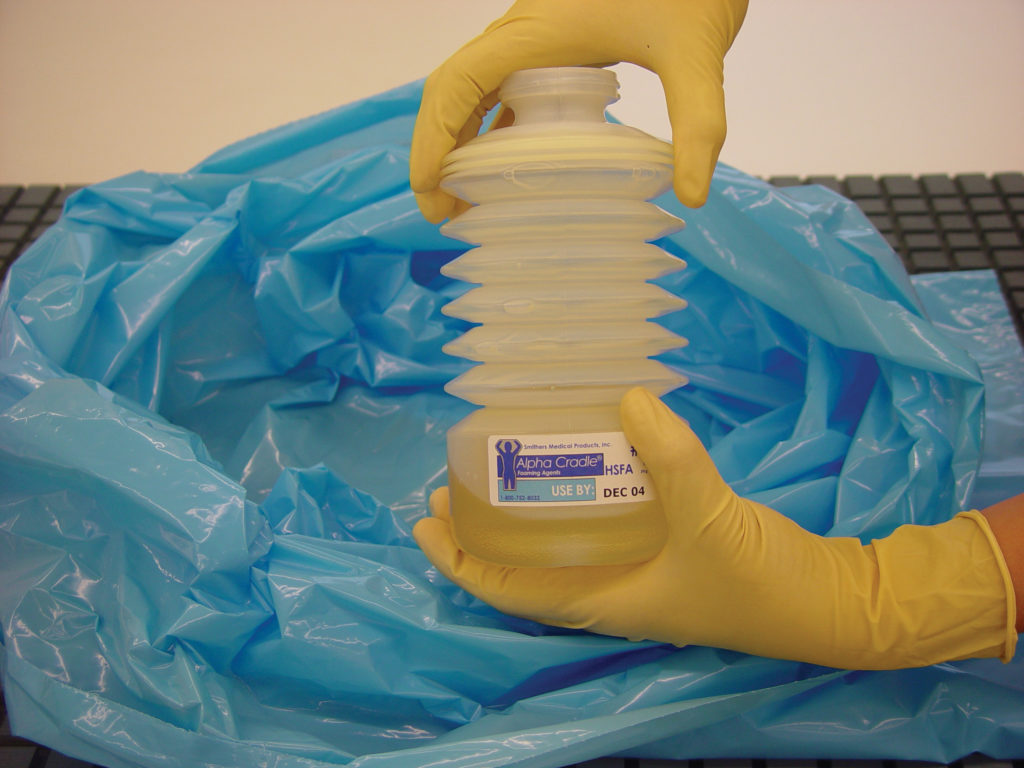 2. Carefully pour the entire contents of bottle #1 into bottle #2, discarding bottle #1 into a leakproof container.
2. Carefully pour the entire contents of bottle #1 into bottle #2, discarding bottle #1 into a leakproof container.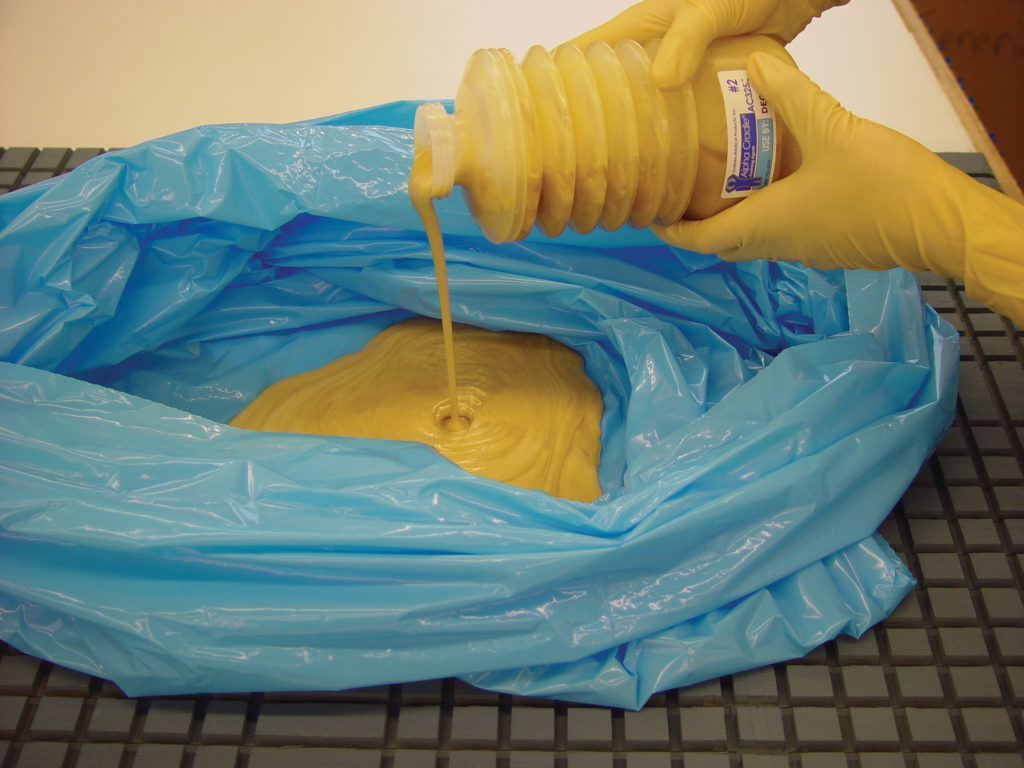 3. Recap bottle and point it down inside the bag toward the base, away from everyone. Shake vigorously for ten timed seconds. Pour entire contents into the bag, removing as much hang up as possible.
3. Recap bottle and point it down inside the bag toward the base, away from everyone. Shake vigorously for ten timed seconds. Pour entire contents into the bag, removing as much hang up as possible.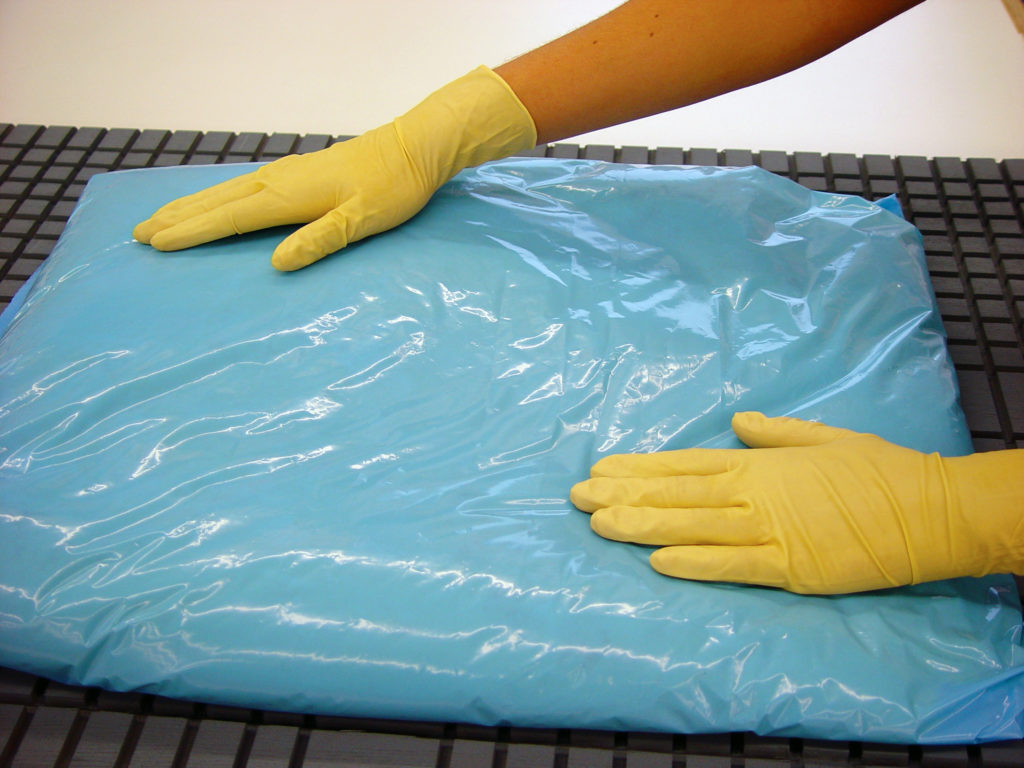 4. Spread the rising foam evenly throughout the bag. Fold the end of the bag underneath, spread foam evenly, and place patient on top.
4. Spread the rising foam evenly throughout the bag. Fold the end of the bag underneath, spread foam evenly, and place patient on top.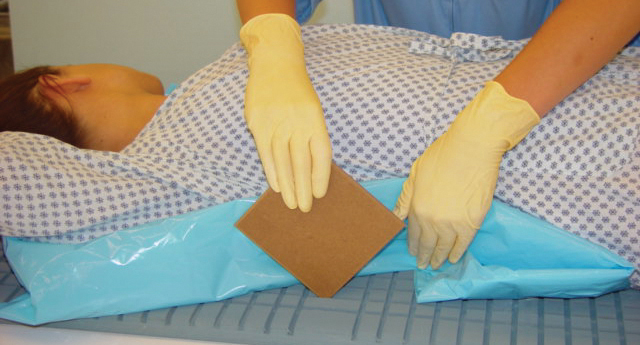 5. Use the dividers to lift and press bag of foam firmly against patient. In 15 minutes, the foam will rise and cool. Remove patient and dividers from mold.
5. Use the dividers to lift and press bag of foam firmly against patient. In 15 minutes, the foam will rise and cool. Remove patient and dividers from mold.
HELPFUL HINTS
STRENGTHENING FORMS: After pouring the foam around the edges of the form and placing the form deep into the bag, remove as much air as you can before folding the excess bag underneath the form. Allow the foam to start to rise above the form, then push down, keeping the foam level with the form, forcing it tightly against the patient.
The form will not be useful if you don’t make a deep impression in the desired set-up position. This may mean putting pressure on top of the patient’s shoulders, keeping them deep in the form, allowing the foam to rise to the top of the form.
Foam that rises above the white form is useless and can be diverted to another area where more foam is needed, or it can be used to make a tight fitting mold by pressing it down and holding it down for several minutes, until the form begins to cool.
CURING EACH MOLD: It is critical that the patient does not move for a full 15 minutes to allow the form to harden properly. As the form hardens, you can feel it cool to room temperature within 15 minutes from the starting point (depending upon temperature and atmospheric conditions in the room). Do not allow the patient to get up until the cradle is cool (room temperature) to the touch. If the area underneath the patient is still warm, allow it to cool and harden properly before use. This will result in a secure, comfortable tool to quickly reposition your patient each time they come in for treatment.
